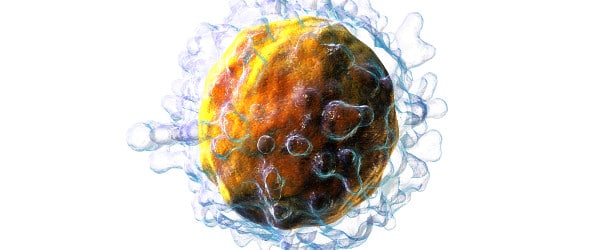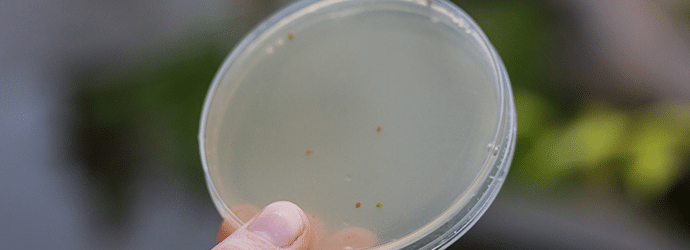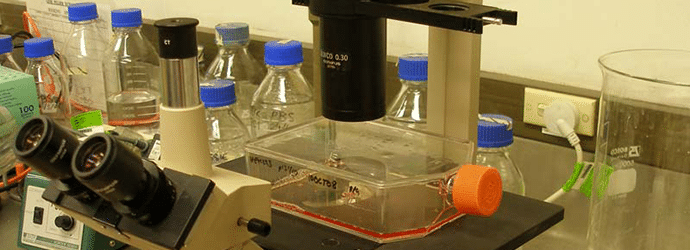What Is Explant Culture and Why Should I Use It?
Explant culture is the culture of small pieces of tissue surgically removed from animal tissue or organ. It is a useful method for several reasons.
- The maintenance of the histotypic architecture and biochemical properties of the cells means it more closely resembles the tissue in vivo than established cell lines.
- Explant tissues retain their own cytokines and growth factors meaning proliferation is less stressful and more biologically relevant.
- Cells migrating from explant are in molecular communication with the companion cells of the explant, this provides crucial biochemical and biomechanical signals that are essential for tissue morphogenesis, differentiation and homeostasis.
When Can I Use This Method?
Explant culture is used in establishing a variety of cell lines from different sources including mammals, rodents and avians. Because the cultures more closely resemble the in vivo situation of cells this technique is useful in a wide variety of applications including obtaining stem cells, cancer research, genetic engineering, vaccine production, drug screening and toxicology testing.
How Do I Perform an Explant Culture?
Obtaining the Explant
An explant can be obtained surgically using sterile equipment from mammals, rodents or avian organs or tissues. For example, a piece of gingival tissue following tooth extraction can be removed as an explant to establish human gingival fibroblasts or a piece of adipose tissue can be used to establish mesenchymal stem cells.
Cut and Clean the Explant
Once you’ve got your tissue it is time to cut and clean it. You want to first place it in a petri dish containing around 1-2 mL of incomplete medium (medium without serum). Then, using a sharp surgical blade, you can cut it (usually around 1×1 mm pieces). Collect the pieces of explant using a sterile forceps and wash gently. Washing can be done by transferring pieces into a centrifuge tube containing around 0.5 mL of incomplete medium. Gently mix by pipetting the medium 4 to 5 times, and allow the pieces to settle down and remove the upper medium. This can be repeated 2 or 3 times.
Enjoying this article? Get hard-won lab wisdom like this delivered to your inbox 3x a week.

Join over 65,000 fellow researchers saving time, reducing stress, and seeing their experiments succeed. Unsubscribe anytime.
Next issue goes out tomorrow; don’t miss it.
Culturing the Explants
These obtained explants are aseptically placed on a coated surface and allowed to attach to the surface in the presence of a rich culture medium. This is usually basal minimal media, Dulbecco’s Modified Eagle Medium (DMEM) or Minimum Essential Medium Eagle (MEM) supplemented with 10-15% serum. The explants are then cultured in standard tissue culture conditions (pH 7.2-7.4, temperature 37°C, 5% CO2 and humidity) to allow for cell migration and proliferation.
You need to change the media every 3 days without disturbing the explants. Depending upon the health and age of the tissue, cells emerge out of the explant within 15-30 days. Once outgrowth of cells starts from the explant, add 5 mL of medium to the flask in subsequent days.
Subculturing and Establishing Cell Line
After the explants are completely surrounded by the cells, you can trypsinise the cells and subculture. It is better to use a lower concentration of trypsin (e.g. <0.25% of trypsin for 5 min). Choose an appropriate size of flask for seeding, depending on the total number of cells obtained.
Challenges in Explant Culture
While explants are great to use there are a few hurdles that you need to overcome before working with them. The main challenges are:
- cells take time to emerge out from explant, hence the establishment of a cell line might take about a month
- the possibility of explant-borne contamination
- the generation of heterogeneous cells or a mixed population of cells.
But don’t worry, here are a few simple tips to overcome these problems.
Younger Cells Grow Faster
If you want to get your cells quicker (within 15 days), make sure you collect the explant from a healthy and younger donor. As younger cells divide and grow faster, they retain their characteristic growth in vitro also, so chances of getting the cells quickly from the explant are very high.
Avoid Contamination
The explant-borne contamination can be avoided by dipping the tissue piece in a povidone-iodine solution for 2 to 3 min. Remove the remaining povidone-iodine residue by rinsing the explant in phosphate-buffered saline (pH 7.4). You can then place the explant in minimal incomplete medium and separate out hard or dead tissues if there is any.
Obtaining Homogenous Cell Population From a Heterogeneous One
Usually, in explant culture heterogeneous cells are observed in early passages. To overcome this problem, apply your knowledge of the morphology and growth pattern of the cells you are interested in. In the case of explant culture of gingival tissue, spindle-shaped gingival fibroblast cells emerge first from explant, before the appearance of gingival keratinocytes cells.
Gingival keratinocytes appear oval to cobblestone in morphology, start appearing a week after the fibroblast cells emerged from the explant. and grow above the fibroblast cell monolayer (Figure 1).

If the goal is to establish a gingival fibroblast cell line from gingival tissue, let the flask become confluent with fibroblast cells and then immediately subculture it. Because the keratinocyte cells are fewer in number they disappear in the subsequent 3 to 4 passages (Figure 2).
If the goal is to establish keratinocyte cells from gingival explant, scrape out the fibroblast cells and add keratinocyte specific medium to the flask so that only keratinocytes growth is supported.
Explant method is a simple and cost-effective technique used to establish cell lines that have. histolytic, biochemical and biomechanical properties similar to in vivo. Therefore, this method is accepted and widely used in cellular and molecular biology. Do you use explant culture in your lab? Would you consider it? Leave a comment below.
You made it to the end—nice work! If you’re the kind of scientist who likes figuring things out without wasting half a day on trial and error, you’ll love our newsletter. Get 3 quick reads a week, packed with hard-won lab wisdom. Join FREE here.









